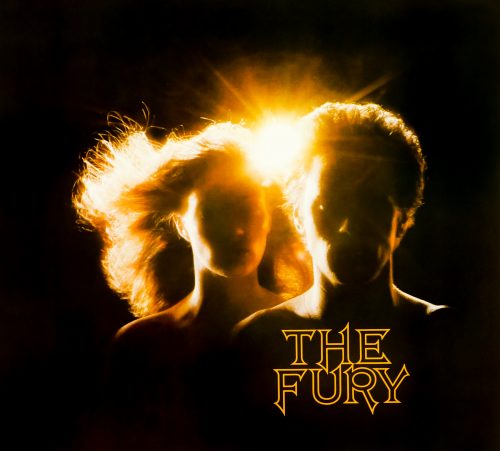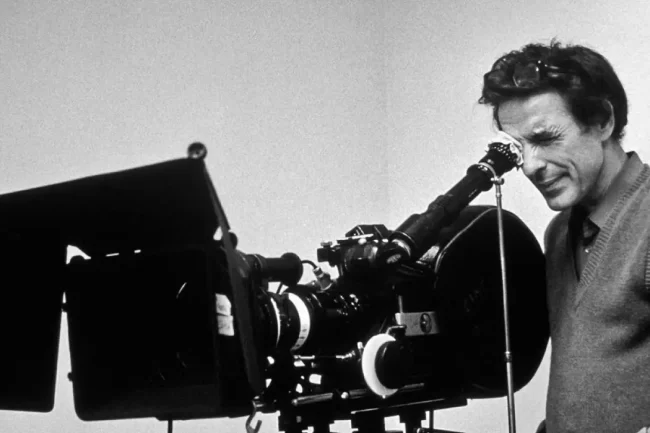John Cassavetes was not only a very successful actor, he was also a very successful director. Thus when you google “best John Cassavetes movies”, you often find highly experimental, improvisational, narratively complex and “independent” films that he’s directed. Films like “A Woman Under the Influence,” “Husbands,” “Faces,” and “Shadows,” with nuanced powerhouse ensemble actors like Gena Rowlands, Ben Gazzara and Peter Falk, who defined an entire era in American cinema. Cassavetes’ influence on modern independent filmmaking from behind the camera has surpassed anything else he’s ever done in front of the camera. However, he did start as an actor and the performances he’s given rank as some of the best of all time. If you were wondering which Cassavetes starring movies are best to start with (you probably weren’t), here are two that I saw this weekend that I loved: “The Fury” and “Rosemary’s Baby”. Interestingly both are horror movies which feels fitting as it is fall.
One Friday night, I was so tired from a very long week of work – especially because each week so far this year has felt a month long – that I could have gone to sleep the second I got home. I didn’t. Eventually, when it was already too late I decided to watch the movie, “The Fury” (1978, directed by Brian De Palma). From the very beginning of this movie to the very end, I was completely on the edge of my seat. Each second feels important and terrifying. This is not a horror movie that slowly builds up. It starts in the stratosphere, and then simply walks forward. Cassavetes plays a brilliant villain who embodies an elegantly contained rage and menace. He always has a look in his eyes that implies that he is only thinking about what he can do next. He moves methodically and never seems to question his decisions. A villain that can be unpredictable scares me but a villain that completely knows what he’s doing ahead of time absolutely terrifies me. Kirk Douglas and Amy Irving are also perfect. Irving plays the protagonist of the movie: a teenager with psychic abilities who doesn’t understand the full extent of her powers. She is pitted against the United States government and eventually somebody with powers that rival her own. Douglas plays a father trying to find his kidnapped son who has similar psychic talents to Amy.

The movie uses a mixture of dreams, superhuman abilities, lavish action scenes and weirdly beautiful Chicago architecture to slowly give the audience little pieces of the puzzle that allow for everything to come together in the end. In fact, the beat of this movie feels and is inspired by Alfred Hitchcock’s best thrillers. Yet it feels unusually unique. As it progresses, its visuals reach a whole new level of talent where the music and images combine to put you into a trance where you can’t even think of attempting to look away, mainly because you can’t think about anything else. The ending is one of the most stunning scenes that I’ve ever seen because it uses a combination of fake blood and creativity to create something truly shocking. This isn’t a film that takes its time to end, once the best scene has hit, the credits roll, leaving you both wishing there was more and being very happy that it ended there. The director Brian De Palma (“Carrie,” “Dressed to Kill,” “The Untouchables,” and ”Mission Impossible”) said that after the first take of the ending, the whole set was covered with blood and that it took them a week to do take two.
Speaking of De Palma, his directing is what helps this movie reach new heights. He brings, to this movie, his iconic creativity and passion, which have helped make directors like Jean-Luc Godard and Quentin Tarantino and writers like Pauline Kael and Bret Easton Ellis fans of his work. However, this movie already had a pretty impressive script, written by the novelist John Farris. The movie’s screenplay is an adaptation of Farris’s 1976 novel. The last time before this that a Farris novel was adapted into a movie was the TV movie, “When Michael Calls” – definitively not worth seeing.
“The Fury” came out in 1978 and is generally overshadowed by other works from De Palma and his contemporaries. Still, it holds up in very unexpected ways and when watching it, I could notice parallels to recent works like “Stranger Things” and “Get Out”. Without the mesmerizing images and beautiful music of “The Fury” to hold my attention any longer, I closed my eyes and didn’t open them until the next morning.
When I woke up, I started doing what I should’ve been doing earlier: homework for school. However, I quickly got bored and decided to watch another movie instead. The next movie I saw was “Rosemary’s Baby”. Unlike “The Fury”, “Rosemary’s Baby” is a very slow build. It is about two hours and fifteen minutes and takes its time getting to know each of the characters. Mia Farrow plays Rosemary, a young woman married to Guy, played by John Cassavetes, a working actor making a good living through commercial and television parts but wants to be rich and famous. They move to a new building in New York City called “The Bramford”; the real building that this movie was shot at is called “The Dakota”, a famous building on the Upper West Side that stands out for its Gothic architecture and unique courtyard. The horror of “Rosemary’s Baby” comes from Rosemary and Guy’s creepy neighbors who seem to be part of a cult. I would love to say more about the plot but I won’t in case I spoil it for you. This movie takes its time revealing all of its details. If I were to say one more thing, then I would’ve spoiled the first forty minutes of the movie. If I were to say another thing after that one more thing, I would’ve spoiled the forty minutes after that and so on.
Unlike “The Fury”, “Rosemary’s Baby” is very sophisticated. It barely uses any violence and when it does so, it does it very purposefully and minimally. Instead, its horror comes from the suspense that keeps building. Its mystery is what keeps it exciting. This is a movie that you’ll never be able to guess the ending of. I am nervous though that this review is making the movie sound boring. It isn’t. Its entertainment comes from its fascinating central characters. Guy is desperate to be famous and this desperation puts a strain on his relationship with Rosemary. Rosemary understands that something is wrong but she can’t quite place it. She constantly tries to bury her reasonable fears and listen to those around her but she can’t. She has a destructive urge to learn more even though doing so can only cause her and those around her harm.

This movie is also a perfect representation of New York City on screen. It’s about claustrophobia, weird neighbors and how crowded and frightening the city really is. By living in New York City, Rosemary is forced to trust cab drivers, doctors and real estate agents all of whom have their own agendas. What makes it so amazing is that the person who wrote and directed this movie isn’t from New York City. He isn’t even from America. In fact, this movie was the first that he directed in America at all. His name is Roman Polanski and he’s responsible for other classics like “Chinatown” and “Repulsion”. However, many have called this movie his best. The dialogue feels realistic, from Guy’s endless attempts to be liked and accepted to his humor. The plot feels tense down to the little details that begin appearing in every scene since the beginning. The acting is flawless. Ruth Gordon plays one of the neighbors and plays it to utter perfection (she is also incredible in “Harold and Maude”). Farrow gives one of her greatest performances ever and brings so much of the horror of her situation out through the way that she moves her elbow (she is also excellent in “Purple Rose of Cairo” and “Broadway Danny Rose”). Finally, Cassavetes has a cunning way of presenting his character as both likable and ruthless. He makes you understand why Farrow’s character fell for him and yet he keeps up a troubling attitude throughout the whole movie.
I can’t overstate how happy I am that I chose to interrupt this double feature with nearly nine hours of dreams. There’s no better way to watch these two horror movies than like that. Each one feels like a dream itself, in that they both connect with my unconscious and seemingly reveal my own deepest thoughts back to me. I also had never seen a movie by Brian De Palma or Roman Polanski before but because of these movies, I will definitely be seeing more by both of these filmmakers. I’d recommend watching “The Fury” if you want something exciting and moving and watching “Rosemary’s Baby” if you want something delicately constructed that feels like more of a classic. Either way, you’ll be seeing some of the best horror made by some of the masters of it.







Love Cassavetes and this article!